Sand cat: drinks blood instead of water and eats poisonous snakes (10 photos)
The cat in the photo looks like the cutest plush toy. But this "kitten" comes from hell. The sands where he lives are so hot that you can fry eggs. Instead of mice, he catches poisonous snakes, and instead of water, he drinks blood. Welcome to the world of the sand cat. A world where you survive on the edge of your capabilities. 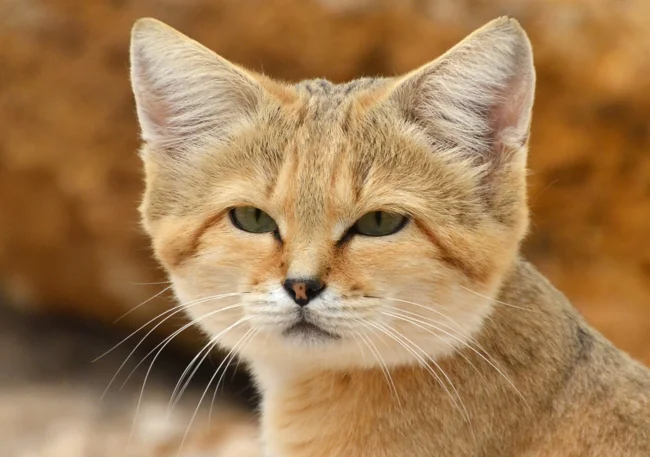
The sand cat is 1.5-2 times smaller than a regular domestic cat. The weight of adult males is no more than 2.5 kg. These are one of the smallest species of wild cats in the world! But the animal has enough brutality for a whole lion. It lives where other predators cannot survive. 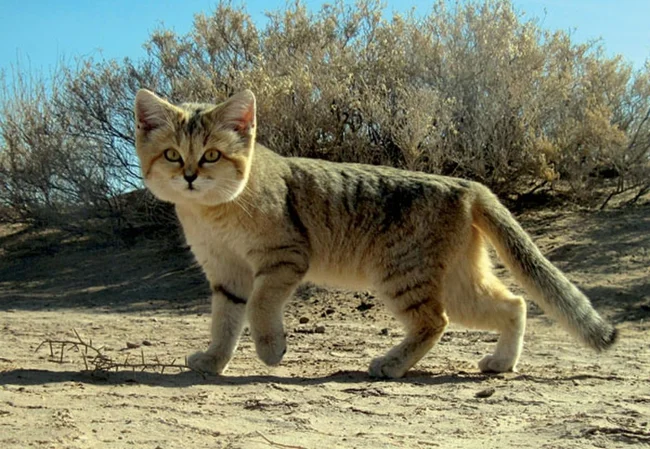
The sand cat is the only representative of the felines that lives in such arid places.
The sand cat's home is the hottest and driest places on our planet: North Africa, Southwest and Central Asia. Merciless dunes are indifferent to the fate of those unfortunates who settled here. These places are barren and waterless, and during the day the floor turns into lava - the surface of the sand heats up to 80 ° C. But the tiny kitten was not afraid of the challenges. He challenged nature itself. 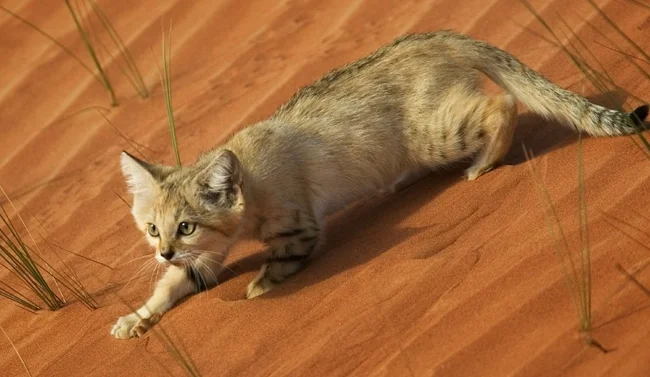
When you settle in the largest cat litter box on the planet and now you don't have to think about where to go to the toilet!
His entire appearance is the result of evolutionary decisions honed to the smallest detail. The golden fur coat hides the sand cat from predators and prey in the sea of sand and waves of the dunes. The thick undercoat warms when the scorching heat during the day gives way to the bone-chilling cold at night. Temperature drops in the desert reach 30-40°C per day! 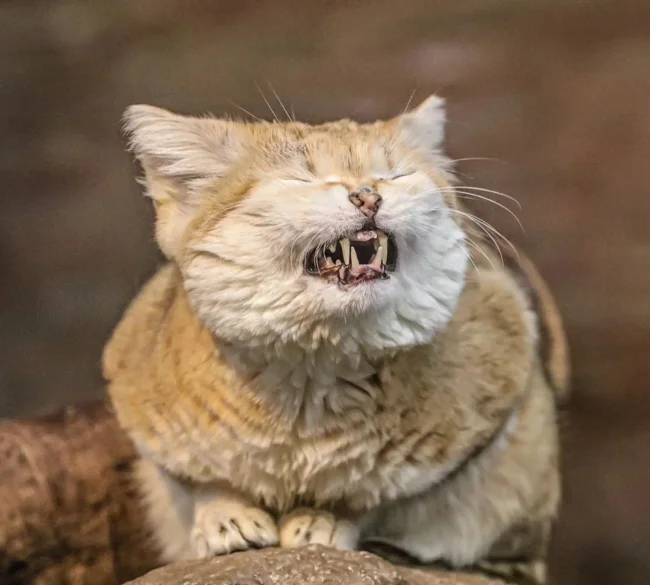
When I decided to try a contrast shower.
By the way, despite the heat, the sand cat always wears mittens. The pads of its paws are covered with a thick layer of fur. So the hot sands do not burn the delicate skin, the cat can move even during the day. And the sand cat needs to move a lot. While your lazybones warms its belly in the sun, the sand cat walks 5-10 kilometers every day to find food in the barren lands. 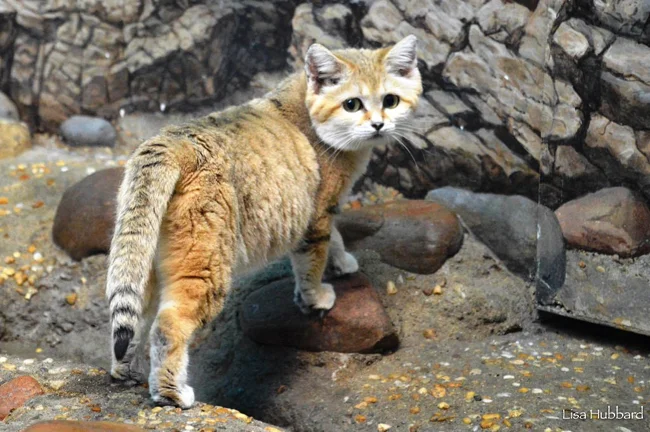
The sand cat looks with pity at how modern people can't find 10 thousand steps.
Its charming ears help it find prey. They sit not on the top of its head, but on the sides. Previously, it was believed that this adaptation was needed to keep sand out. But it turned out that the special position of the locators increases the size of the ear canal by almost two times. Therefore, the range of sounds that desert cats can hear is wider, and the distance is half a kilometer further than that of domestic cats! 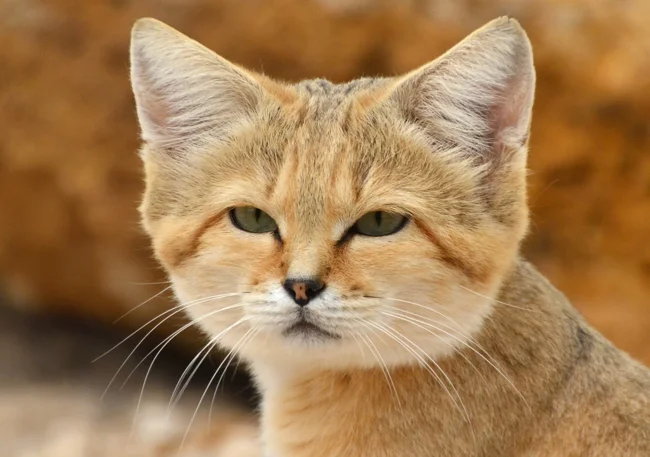
I'm listening to you carefully.
The sand cat eats everything that the desert deigns to send it. A jerboa? Excellent. A spider cricket? Wonderful! A poisonous viper? Super! Any living thing that the cat finds in the sand becomes both food and water for it. This is not a typo. Finding water in the middle of the desert is a miracle. That's why the sand cat's kidneys have learned to squeeze the most out of everything that enters the body. They process the blood of prey and turn it into water. 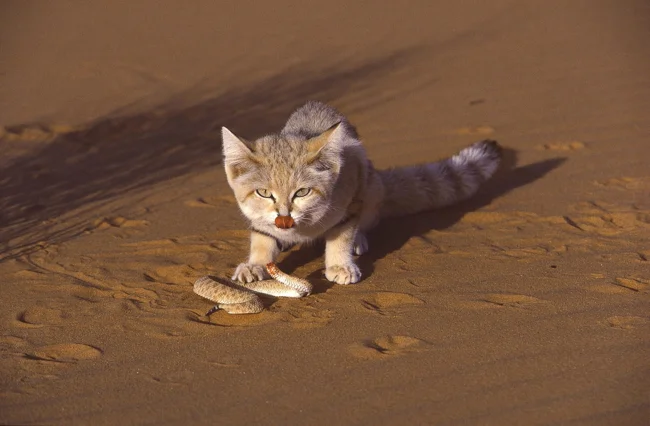
Mom was right, you can't eat dry food!
Don't be stupid, the sand cat does all its activities at night. During the day, the predator takes a siesta - climbs into a hole and waits until the merciless sun sets over the horizon. There can be up to four holes on the territory of one extreme predator. It doesn't build them itself - otherwise its dagger-claws would turn into shovel-claws. The animal occupies abandoned shelters of foxes and large rodents. 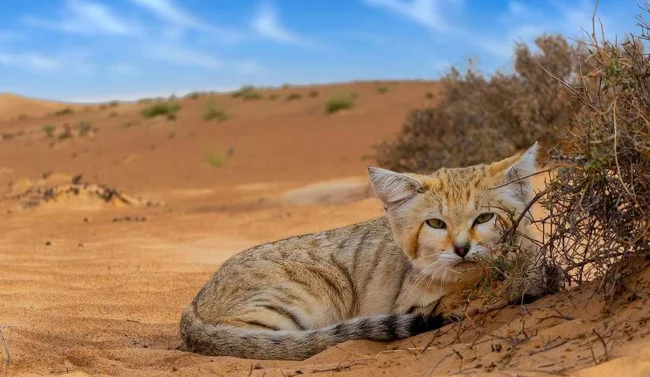
Outside the shelter, sand cats rest during the day only in winter, when the sun is not as scorching as usual.
Here, in the hole, the mother cat breeds her offspring. The process of procreation in sand cats is not much different from the March madness of domestic cats. After a couple of months of pregnancy, helpless lumps covered in pale yellow fur are born. But after six months, the young kittens will set off on their own journey across the endless expanses of lifeless sands. 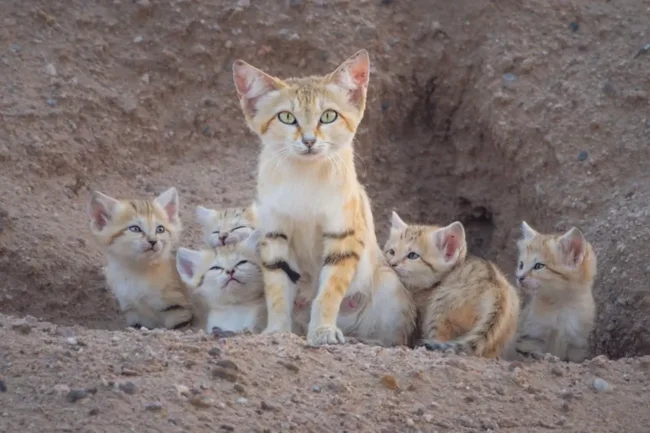
The Martian cats greet you.
Unfortunately, not everyone will live to be a year old. Tiny cats become easy prey for owls, foxes and jackals. But the main enemy of the fearless desert predator is man. In the UAE, Iraq and Pakistan, people were so enchanted by the round muzzle that sand cats were caught from the wild for sale. The paradox is that the comfortable conditions of an apartment become mortally dangerous for a wild animal. 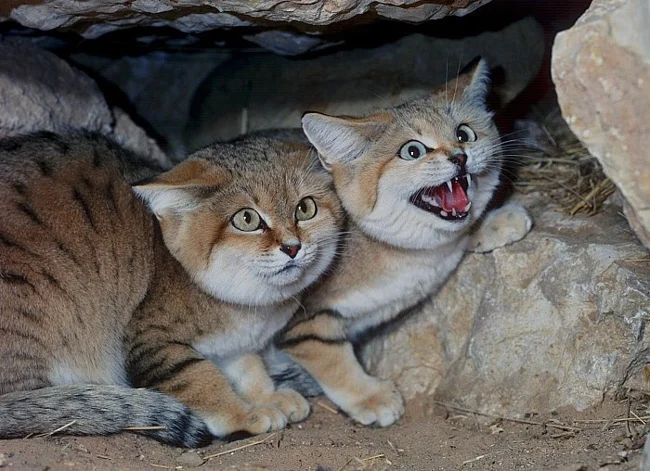
We don’t need your civilizations! Leave us alone!
The main problem is humidity. The respiratory system of sand cats is adapted to dry, scorching air. Putting a desert predator in an apartment is the same as putting a person in a hammam for life! Against this background, diseases cling to a cat like burrs to a dog. More or less suitable conditions can only be created in a zoo. But this is such a difficult task that the world population of sand cats kept in captivity in 2008 numbered only 200 individuals!






























